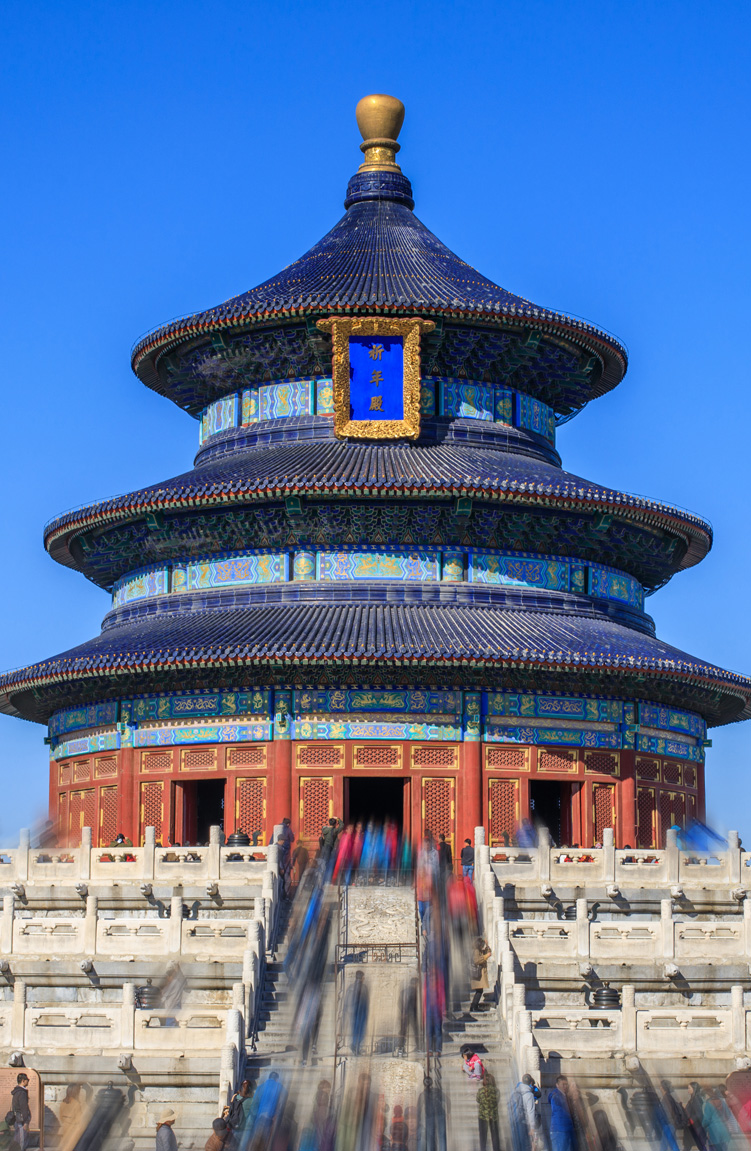
北京天坛,坐落于北京市东城区,是中国古代帝王祭天、祈谷之地。
The Temple of Heaven, located in Dongcheng District, Beijing, was a sacred site where ancient Chinese emperors conducted ceremonies to worship heaven and pray for a good harvest.

天坛的核心区域由圜丘坛、皇穹宇、祈年殿等几座建筑构成,每一座建筑都蕴含着丰富的历史意义和文化象征。圜丘坛,是皇帝冬至日祭天的地方,其独特的三层圆形石坛设计,寓意着“天圆地方”,体现了古人对宇宙的认知与敬畏。皇穹宇,是一座供奉皇天上帝和皇帝列祖列宗神牌的圆形建筑,祈年殿,则是天坛中最具标志性的建筑,屋顶覆盖着上青中黄下绿的琉璃瓦,象征着天、地、万物。
The core area of the Temple of Heaven consists of several iconic structures, including the Circular Mound Altar, the Imperial Vault of Heaven, and the Hall of Prayer for Good Harvests. Each building carries profound historical significance and cultural symbolism. The Circular Mound Altar, used by emperors for the winter solstice heaven worship ceremony, features a unique three-tiered circular stone design symbolizing the ancient Chinese concept of a "round heaven and square earth", reflecting their understanding and reverence for the universe. The Imperial Vault of Heaven is a circular building that houses spirit tablets dedicated to the Supreme God of Heaven and the ancestors of emperors. Meanwhile, the Hall of Prayer for Good Harvests, the most iconic structure of the Temple of Heaven, features a roof adorned with blue, yellow, and green glazed tiles, symbolizing heaven, earth, and all living things.

漫步在天坛的古树参天之间,仿佛能听到历史的回音,感受到那份穿越时空的庄严与肃穆。天坛都以它独有的方式,诉说着古老的故事,吸引着世界各地的游客前来探访,感受这份来自远古的震撼与敬仰。
Strolling beneath the towering ancient trees of the Temple of Heaven, one seems to hear echoes of history and feel the solemnity that transcends time. In its unique way, the Temple of Heaven narrates ancient stories, attracting visitors from around the world to experience its awe-inspiring legacy and profound reverence from a distant past.
责编:武玥